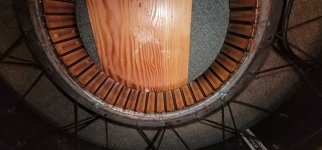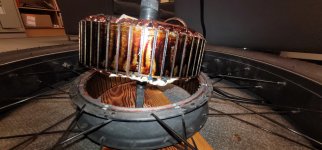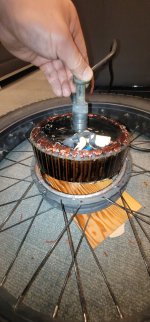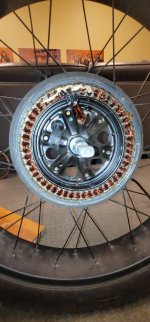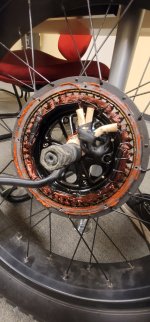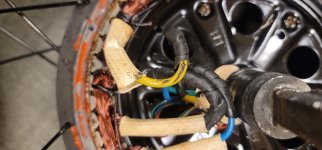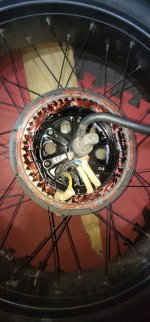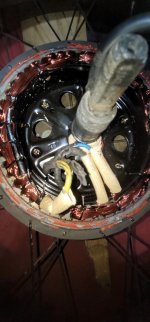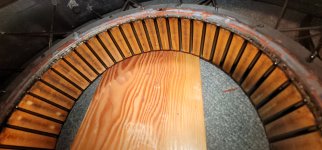Alright to the pros out there:
I need help. I have a stealth bomber clone 26x4.0 fat that has served me very well, 9000km on the odo road it for work commute year round. At around the 5000km mark i increased line amps and phase amps to 70/210. I have no idea what it was set to before that as I didn't save the stock tune, but I'm assuming line amps was probably around 40-45 and phase was little to nothing as the torque off the line was non-existent and hill climbing usually never exceeding 40km/h. Stock tune was with some rebranded fardriver "miduebike" crapass controller. I upgraded, using a fardriver ND72530 when I changed the tune.
So during winter temps, things were fine. As it started to warm up, I noticed my motor was getting kinda hot. I have no temp sensor. I was using a thermal gun to read the outside of the hub motor casing to theoretically monitor temps. I have a QSmotor 205 assumed 3kw, older model.
Bike was working flawlessly until recently, I added statorade and after that, within 12km towards my work commute (41km one way) power cut out. I was getting a "MOE current protect" and "phase surge protect" errors. Now I can't go 100m without it tripping.
My motor did look a wee bit burnt when I took it apart. IT smelled charred the second the casing opened. Near the stator, some of the white sheathing for the windings was black. Under the stator, other sheathing remained white. The phase wire's insulating layer split from either heat or dry cold air or both, as I leave the bike outside year round. Luckily, none of the phase wires made contact directly, as the phase wire insulating areas prevented that (see pic).
I added rubber electrical tape rated for 130c and re-insulated the phase wires. I also noticed some white zip tie melted that was holding the phase wires together (cable management) which means the motor did indeed exceed 80c.
But nothing went wrong until after I added the statorade.
What do you guys think? Maybe my qsmotor 205 is an older model that isn't compatible with statorade? Maybe my motor was on its way out and I added the statorade too late? Is where a way to remove statorade? Even at low speed (800w) it trips.
Any advice and help is appreciated.
I need help. I have a stealth bomber clone 26x4.0 fat that has served me very well, 9000km on the odo road it for work commute year round. At around the 5000km mark i increased line amps and phase amps to 70/210. I have no idea what it was set to before that as I didn't save the stock tune, but I'm assuming line amps was probably around 40-45 and phase was little to nothing as the torque off the line was non-existent and hill climbing usually never exceeding 40km/h. Stock tune was with some rebranded fardriver "miduebike" crapass controller. I upgraded, using a fardriver ND72530 when I changed the tune.
So during winter temps, things were fine. As it started to warm up, I noticed my motor was getting kinda hot. I have no temp sensor. I was using a thermal gun to read the outside of the hub motor casing to theoretically monitor temps. I have a QSmotor 205 assumed 3kw, older model.
Bike was working flawlessly until recently, I added statorade and after that, within 12km towards my work commute (41km one way) power cut out. I was getting a "MOE current protect" and "phase surge protect" errors. Now I can't go 100m without it tripping.
My motor did look a wee bit burnt when I took it apart. IT smelled charred the second the casing opened. Near the stator, some of the white sheathing for the windings was black. Under the stator, other sheathing remained white. The phase wire's insulating layer split from either heat or dry cold air or both, as I leave the bike outside year round. Luckily, none of the phase wires made contact directly, as the phase wire insulating areas prevented that (see pic).
I added rubber electrical tape rated for 130c and re-insulated the phase wires. I also noticed some white zip tie melted that was holding the phase wires together (cable management) which means the motor did indeed exceed 80c.
But nothing went wrong until after I added the statorade.
What do you guys think? Maybe my qsmotor 205 is an older model that isn't compatible with statorade? Maybe my motor was on its way out and I added the statorade too late? Is where a way to remove statorade? Even at low speed (800w) it trips.
Any advice and help is appreciated.
Attachments
-
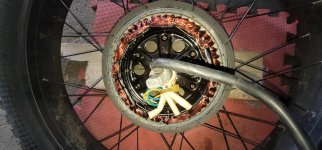 20240425_124712.jpg1.1 MB · Views: 8
20240425_124712.jpg1.1 MB · Views: 8 -
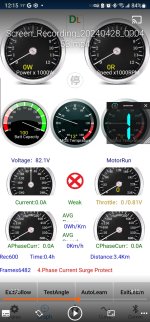 Screenshot_20240428_001519_VLC.jpg518.6 KB · Views: 7
Screenshot_20240428_001519_VLC.jpg518.6 KB · Views: 7 -
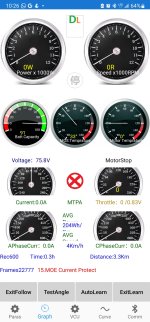 Screenshot_20240425_222644.jpg515.8 KB · Views: 8
Screenshot_20240425_222644.jpg515.8 KB · Views: 8 -
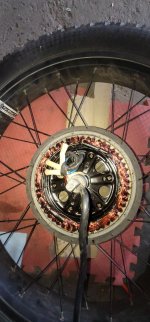 20240425_154609.jpg493.1 KB · Views: 9
20240425_154609.jpg493.1 KB · Views: 9 -
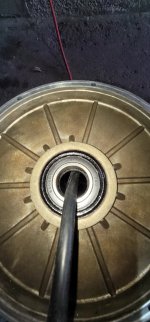 20240425_154532.jpg410.5 KB · Views: 9
20240425_154532.jpg410.5 KB · Views: 9 -
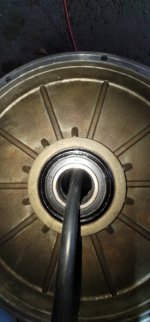 20240425_154530.jpg350.1 KB · Views: 9
20240425_154530.jpg350.1 KB · Views: 9 -
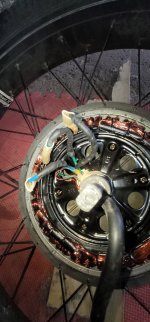 20240425_153919.jpg424.1 KB · Views: 9
20240425_153919.jpg424.1 KB · Views: 9 -
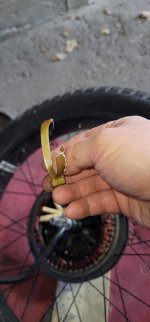 20240425_130514.jpg299.8 KB · Views: 8
20240425_130514.jpg299.8 KB · Views: 8 -
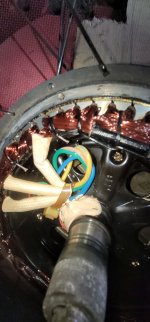 20240425_130338.jpg407.1 KB · Views: 8
20240425_130338.jpg407.1 KB · Views: 8 -
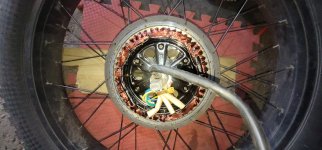 20240425_125029.jpg1.1 MB · Views: 9
20240425_125029.jpg1.1 MB · Views: 9


